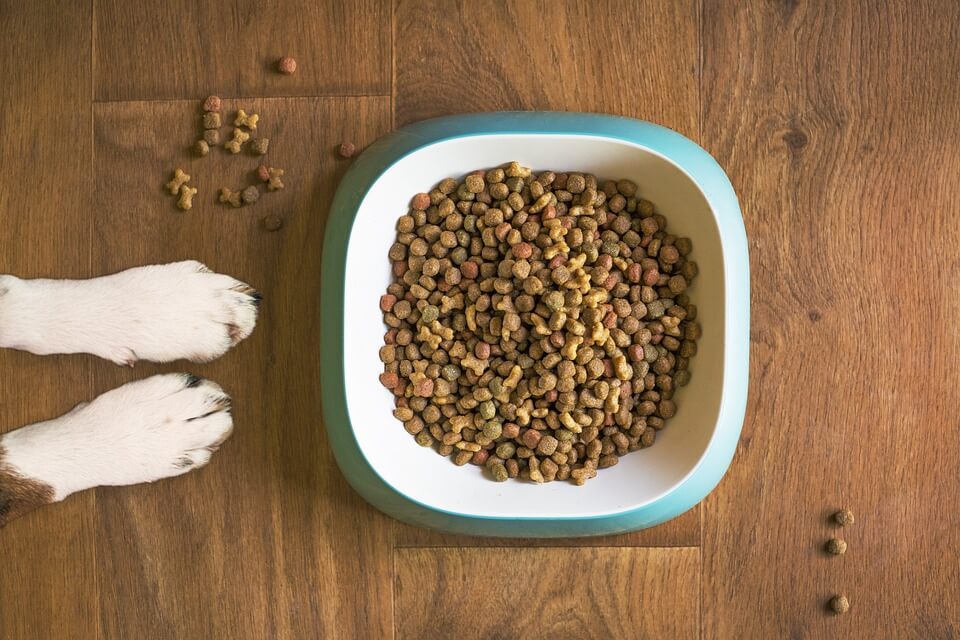Table of Contents
The more dear something is right to us, the more pained we are to see even the slightest defect on it can explain why seeing dental plaques marring the heart-wrenching grin of our beloved doggo can be so disturbing. This post is your guide to dismantling dental plaque. Knowing your enemy is half the battle, so let’s look at what dental plaque is precisely and how it comes to be.
What is dental plaque?
 You probably see it as areas of off-white coloration at the bases of your dog’s teeth. If you are careful enough (and if the good doggo permits), you can scrape it off with a fingernail. Plaque is brought about by bacteria that live in the dog’s mouth. These bacteria interact with ingested food particles and the dog’s saliva to form a thin coating deposited on the tooth.
You probably see it as areas of off-white coloration at the bases of your dog’s teeth. If you are careful enough (and if the good doggo permits), you can scrape it off with a fingernail. Plaque is brought about by bacteria that live in the dog’s mouth. These bacteria interact with ingested food particles and the dog’s saliva to form a thin coating deposited on the tooth.
At this stage, the plaque is still soft and can be easily removed. However, if it stays for something between three to six days, it slowly reacts with mineral salts in the dog’s saliva to form the much more hardened tartar. Unlike plaque, tartar is dark brown and can be easily spotted even from afar.
Why exactly does this matter?
Okay! You may be wondering what harm a little discoloration in a dog’s teeth can cause. I mean, your bundle of joy has been living with it for two years now, and he doesn’t seem to mind. Well, aside from the very nasty, gag-inducing breath associated with dental plaque, some severe health conditions can arise from poor dental hygiene. The dog could develop a condition known as periodontitis. This is an inflammation of the gum at the base of the tooth. It can cause excruciating pain to the poor dog and even lead to loss of teeth. Beyond this, poor dental health has been implicated in cardiac valvular disease, a condition that may cost you bazillions to manage. A little dental care now prevents these complications from occurring in the future.
Okay, how do you go about it? I’ll be giving you some ways to prevent plaque buildup on your dog’s teeth. None of these work for every situation, so keep trying until you get the best fit for you and your dog.
Diet
 Giving dry dog food can help scrape plaque from his teeth while going through chewing motions. Doggo treats also fall under this category. My dog loves Milk-Bone MaroSnacks. They are very nutritious and have a polyphosphate coating, which increases their scraping ability.
Giving dry dog food can help scrape plaque from his teeth while going through chewing motions. Doggo treats also fall under this category. My dog loves Milk-Bone MaroSnacks. They are very nutritious and have a polyphosphate coating, which increases their scraping ability.
Toys
 In addition to being play items, these double as very nifty dog dental care products for dogs, Chewy toys, especially ones with bumps on them, can help clean a dog’s teeth while playing with them.
In addition to being play items, these double as very nifty dog dental care products for dogs, Chewy toys, especially ones with bumps on them, can help clean a dog’s teeth while playing with them.
Brushing
 Yes, dogs brush too. However, you may want to get a specially sized dog toothbrush instead of the human-sized one. Regular human toothpaste or baking soda is also harmful to dogs, so you should get specially flavored (my dogs love the chicken flavor) dog toothpaste. While brushing, angle your brush at 45 degrees to the gum line and scrub in circular motions.
Yes, dogs brush too. However, you may want to get a specially sized dog toothbrush instead of the human-sized one. Regular human toothpaste or baking soda is also harmful to dogs, so you should get specially flavored (my dogs love the chicken flavor) dog toothpaste. While brushing, angle your brush at 45 degrees to the gum line and scrub in circular motions.
Teaching your dog to accept your brushing its teeth might take some patience. But with enough love and hugs and rubs, he should get the hang of it soon enough. In the case that your dog thinks that the toothbrush is a threat of mortal proportions but is comfortable with your touching his teeth, then you might go with dental wipes as an alternative.
Dental Sprays

Assuming that both brushes and wipes won’t work, you can use dental sprays. These kill the bacteria that form the plaque, thereby preventing plaque buildup. This method might require a little struggle where you pry open your dog’s mouth to spray into it.
Coconut oil
 Nature’s very own dental therapy. Coconut oil has bactericidal activity and helps to reduce plaque buildup. I prefer it frozen and added to dog food, but you may choose to use it in conjunction with other means of dental hygiene.
Nature’s very own dental therapy. Coconut oil has bactericidal activity and helps to reduce plaque buildup. I prefer it frozen and added to dog food, but you may choose to use it in conjunction with other means of dental hygiene.
Vet visit
 A yearly vet visit is widely considered the best tartar remover for dogs. The vets may or may not place the animal under anaesthesia, depending on the situation. They’ll then scrape away the plaque and tartar buildup, leaving your dog’s grin blindingly white. This should have been top of the list if not for the little fact that it costs somewhere around five hundred dollars.
A yearly vet visit is widely considered the best tartar remover for dogs. The vets may or may not place the animal under anaesthesia, depending on the situation. They’ll then scrape away the plaque and tartar buildup, leaving your dog’s grin blindingly white. This should have been top of the list if not for the little fact that it costs somewhere around five hundred dollars.
Conclusion
Feel free to experiment and find out novel and more efficient methods of dog dental care. Do not hesitate to get back to us with them. Until then, woof woof!



2